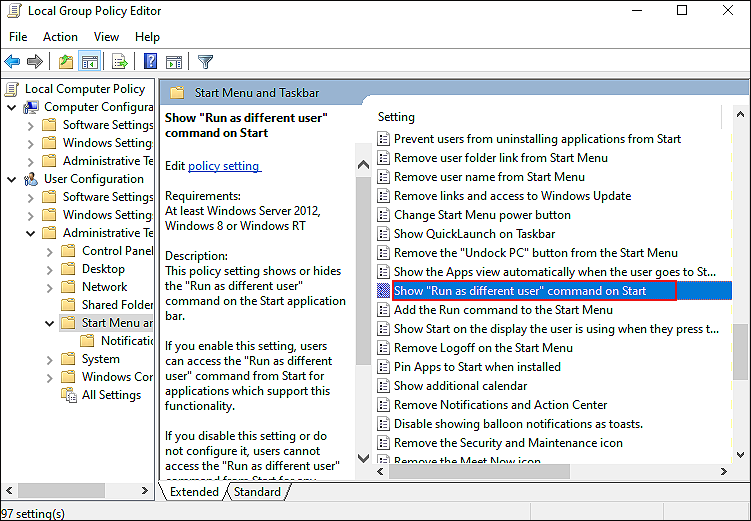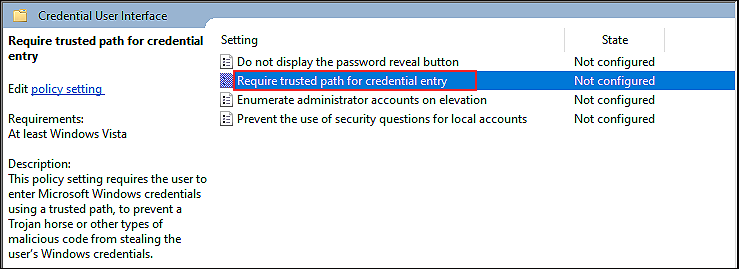Do you want to run an application as a different user in Windows 10?
Long gone are the days when multiple user accounts were impractical to use on Windows. Windows 10 makes it easy for multiple people to share the same PC as they can create their user accounts and then manage them according to their preferences.
It also offers the users a wide range of handy features, so they do not have to compromise on both functionality and privacy. For instance, if multiple users use a computer, and one of them wants to access a particular program as another user without logging out from the active user account, Windows has the option to do so.
If you are wondering how to access this particular feature, you are in the right place. We have compiled a list of easy methods you can follow to run an application as a different user in Windows 10.
Let’s dive right into it!
1. Run the App via Context Menu.
One of the easiest methods to access and run an application as a different user in Windows 10 is through the context menu.
However, you must make some changes in the Group Policy Editor before proceeding with this method. Once you have successfully done that, you will be able to run applications as a different user with a single click.
Here is what you need to do:
- Type Group Policy in the search bar and click on Open.
- Inside the Group Policy Editor window, navigate to the location mentioned below.
User Configuration\Administrative Templates\Start Menu and Taskbar
- Locate the Show “Run as different” command on Start option in the right pane and double-click on it.

- Click on Enabled and then hit Apply.
- Now click on OK to save the changes and restart your PC.
- Upon reboot, use the Start menu to search an application and right-click on the program you want to open. You should now see Run as a different user in the list of options available.
That’s it. Doing so will allow you to open the app as a different user in no time, both now and in the future.
2. Use Command Prompt.
Command Prompt is an administrative-level tool designed for advanced users to execute entered commands. It is also considered a safe place to perform troubleshooting steps and tweak Windows operations according to your preferences.
Here is how you can use Command Prompt to run the application as a different user in Windows 10:
- Type cmd in the search bar and click on Run as administrator.
- Copy the command mentioned below and paste it in the elevated Command Prompt window. You must replace the USERNAME, PathToFile, and UserPassword according to your system.
runas /user:USERNAME "PathToFile" UserPassword
- Once done, restart your PC and check if doing so resolved the issue.
- In case you want to make this change permanent, create a text document on windows and paste the command mentioned above.
- Save the file and rename it with a .bat extension.
That’s it. You can now run your desired programs as different users every time you want to do so in a single click.
3. Try Using CleanMyPC.
If you are unable to access the applications by the methods we have mentioned above, then there is a high chance that a virus or corruption error within your system is preventing you from doing so.
This issue commonly occurs in systems that have plenty of unwanted junk files piled up. If you have not decluttered your Windows registry and other system files for quite some time, then now might be the right time to do it. For this purpose, we recommend using an efficient PC cleaner, and if you’re looking for a suggestion, we recommend trying CleanMyPC.

CleanMyPC comes with a wide range of system maintenance tools, including a Cleaner, Multi Uninstaller, Performance Booster and much more. Once you have installed this cleaning software on your PC, you need to run a scan.
It will not just identify all the issues but also attempt to clean them with little to no user input. If this is something your PC desperately needs, get CleanMyPC now and give your system a much-needed performance boost.
4. Use Windows Explorer.
You can also use Windows Explorer to open programs as a different user easily.
However, some users might not see the required option in their drop-down menus as the other users can. If you are one of them, don’t worry. This process will walk you through all steps you must perform to use Windows Explorer for opening programs.
Here is what you need to do:
- Type Group Policy in the search bar and click on Open.
- Inside the Group Policy Editor window, navigate to the location mentioned below.
Computer Configuration/Administrative Templates/Windows Components/Credential User Interface
- Locate the Required trusted path for credential entry policy on the right pane and double click on it.

- Select Enabled and then click on Apply.
- Now click on OK to save the changes and navigate to the directory containing the program you want to access.
- Right-click on the application. You should now see a Run as different user option. Click on it to open the program as another user.
You should now be able to access and use the application without any issues.
This brings us to the end of our guide, running an application as a different user in Windows 10. We tried walking you through all the steps in detail and hope that one of the methods helped you resolve the problem once and for all. If you have any questions regarding the troubleshooting steps, please let us know in the comment section below!
If this guide helped you, please share it. 🙂





